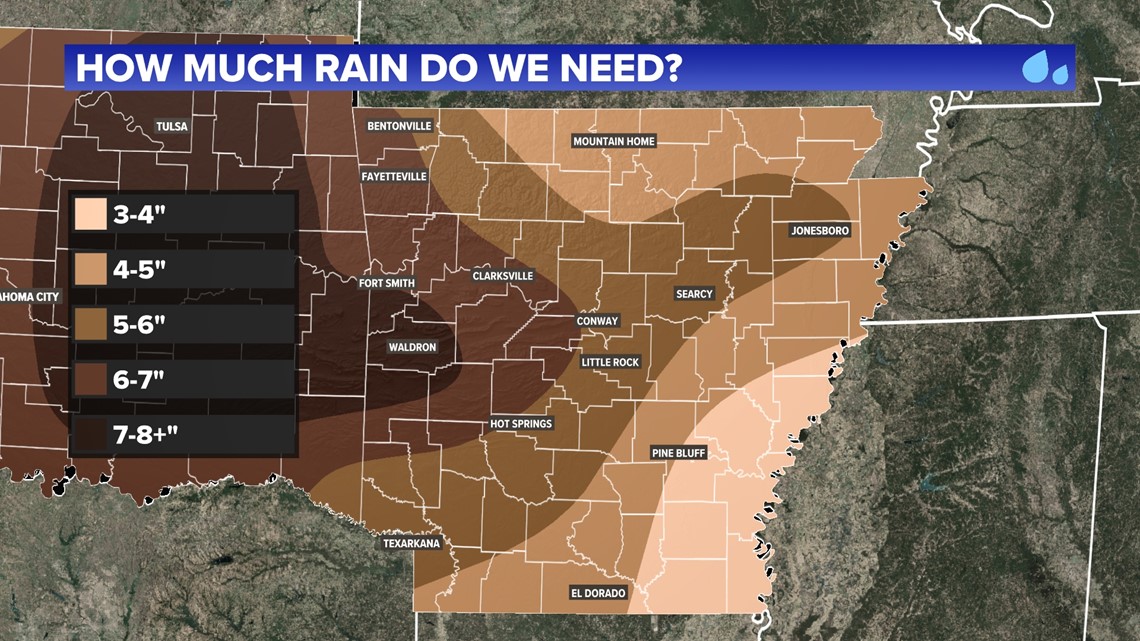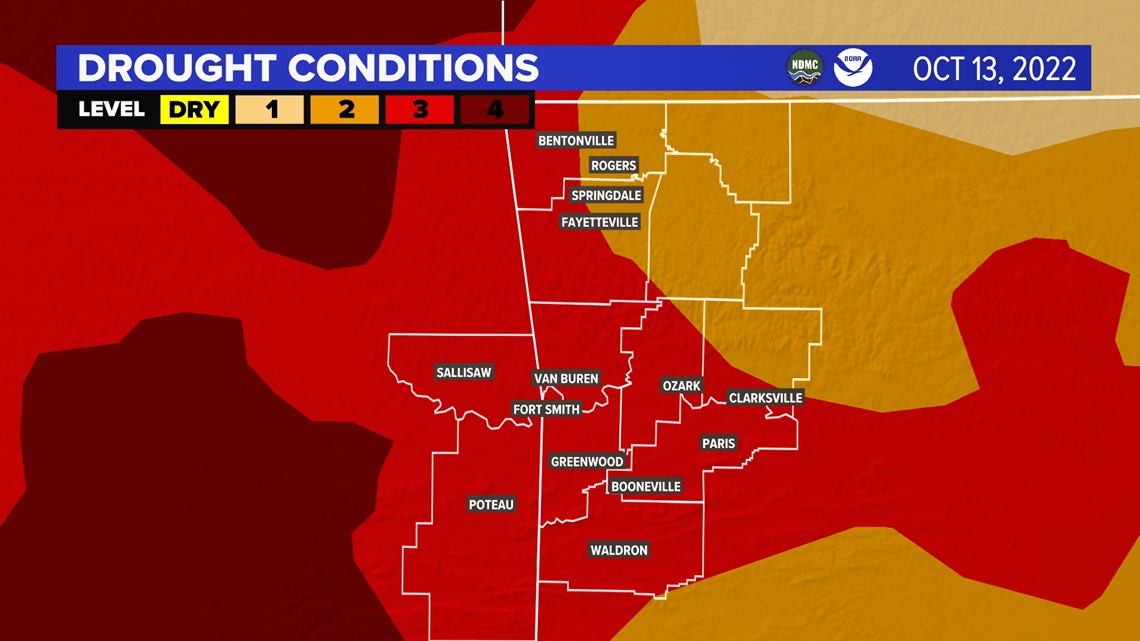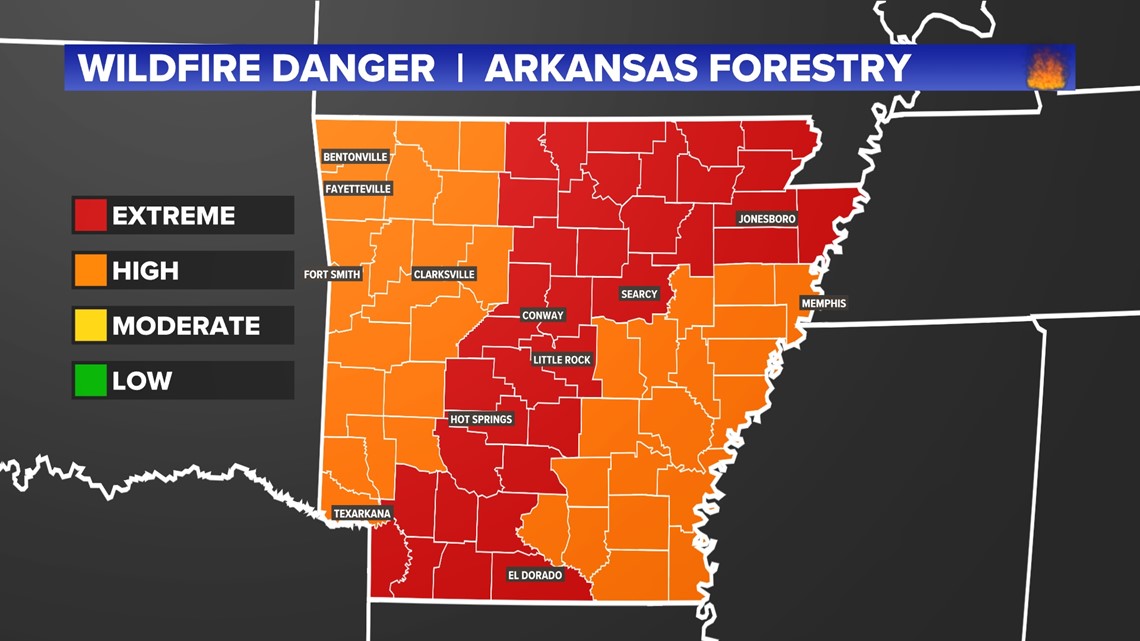ARKANSAS, USA — The drought has been bad and it continues to get worse across Arkansas and Oklahoma -- how much rain do we need to reverse and end the drought?
What a huge turnaround... spring 2022 brought above-average rainfall across Arkansas and Oklahoma, but the summer brought almost nothing. Flooding was a big issue many times this year as downpours and hail storms were common. That all came to an end around June and July. Sporadic rainfall has severely dried up the fields in the south.
Tap HERE to track rain across the U.S.
RAINFALL NEEDED
Green Country and western Arkansas are not looking as green as usual thanks to little-to-no rainfall this summer. The extreme heat also helped dry up leftover rains from the spring.


The driest conditions are in eastern Oklahoma and the Arkansas River Valley. Most of the the western half of Arkansas could use a slow and steady half foot of rainfall.
County-by-county rainfall needed:
- Adair (OK): 6-7"
- Benton: 5-7"
- Carroll: 4-6"
- Crawford: 6-7"
- Franklin: 6-7"
- Johnson: 5-7"
- Le Flore (OK)
- Logan: 6-7"
- Madison: 5-6"
- Scott: 7-8"+
- Sebastian: 7-8"+
- Sequoyah (OK): 6-8"+
- Washington: 6-7"
DROUGHT UPDATE -- OCT 13, 2022
In the south, the "extreme" drought, or level 3, has now engulfed the majority of the Arkansas river Valley. In the north, NW Arkansas is drier west of I-49.
The highest level of drought (4 or "exceptional) continues to expand across eastern Oklahoma and east toward the the AR-OK state line.


WILDFIRE RISK GOING UP
Thanks to low rainfall and low humidity, wildfire threats are maximized across a large swath of Arkansas. Plus with the fall leaves dropping quickly, another consequence of the extreme drought, there is more fuel for wildfires to spark. In addition, windy days are becoming more common as winter approaches. These winds can help fires spread rapidly.


-5NEWS Chief Meteorologist Matt Standridge

